
People often make the mistake of thinking that video games are a relentlessly forward-looking medium. It’s all about the next big release, the next console generation, the next PC graphics card technology. Except it isn’t really. Games are, like most other artforms these days, obsessively self-referential. They are constantly mining the past for successful ideas, merging old genres to create strange new ones, or simply borrowing the aesthetics of past generations. If modern games have one fault (they probably have more, but let’s not go there), it’s that they can seem intimidating to newcomers because they rely so much on age-old conventions and traditions.
Also, old consoles are nice. They look weird and thrilling, with their chunky plastic bodies and their gigantic cartridge ports. They are relics of fun, nostalgic artifacts that remind us of childhoods spent waiting patiently for games to load from cassettes, or blowing the dust out of old carts. Obviously, there are hundreds of online emulators that let you experience classic titles from the comfort of your PC, but that’s sort of missing the point – much like listening to the MP3 of an old 78 record. Part of the pleasure is in the ritual of the vintage hardware: plugging in a cartridge, sliding in a diskette, or hitting the button that sends a CD lid flipping up like an old ghetto blaster. It’s faintly fetishistic, of course, but you know, fetish is about pleasure, and old games machines certainly provide that.
Anyway, for those interested in trying old consoles first-hand, here are six classics that I’d recommend starting with. I deliberately chose machines that are easy to get hold of on eBay or at car boot sales and that won’t break the bank. They all have very large gaming libraries and again, the games are easily available. These are all relatively reliable too so even if you buy one that looks like it has been driven over by a Ford Mondeo, it should still function.
As ever, feel free to add your own suggestions!
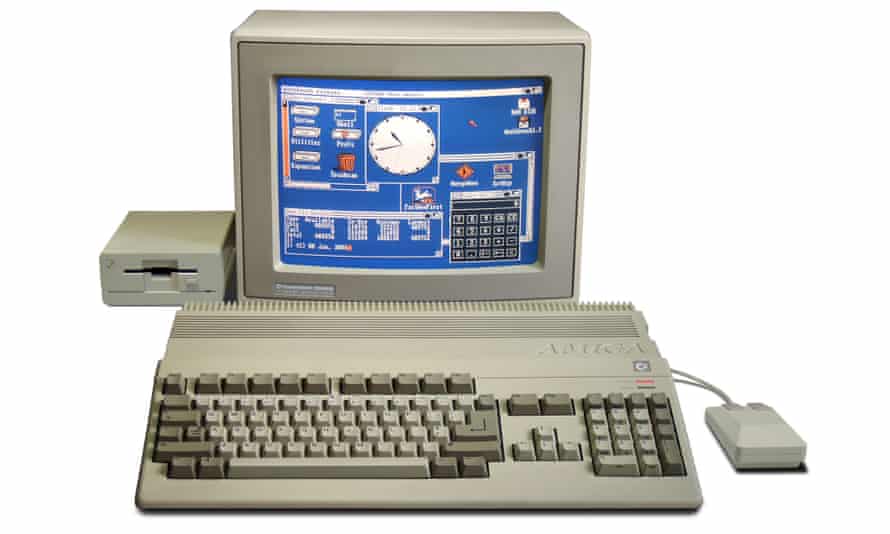
Commodore Amiga, 1985
Okay, this isn’t strictly a console, it’s a home computer, but if you owned an Amiga in the late-eighties or early nineties you owned one of the best games machines on the planet. This was the glory era of Britsoft, when idiosyncratic UK studios like Bitmap Brothers (Speedball 2, Chaos Engine), Team 17 (Worms), Bullfrog (Syndicate) and Sensible Software (Cannon Fodder, Sensible Soccer) were in their pomp. It’s also where a lot of technically gifted European studios like Guerrilla and Housemarque originated, courtesy of the ‘demo scene’, where coders, artists and musicians competed to wring the absolute most out of the Amiga hardware.
Buying guide: you can get a basic functional Amiga 500 for about £35 on eBay, but look for people offering bundles of the computer and games. Subsequent models, including the Amiga 600 and Amiga 1200, offer more processing power and design refinements, as well as compatibility with later titles, but most of the best games will run on a 500 or the slightly improved 500+ just fine. “I’d go for the Amiga 500+,” says journalist and vintage games collector Will Freeman. “It plays a few more late era games than the 500, and with an easily available, super simple to use bit of software – I use ‘Relokick’ – you can trick your Amiga 500+ into booting up as an Amiga 500, thus letting you play all the additional games.”
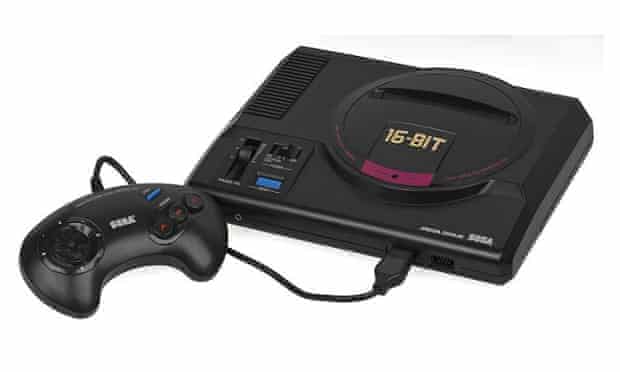
Sega Mega Drive, 1988
As the first major 16bit console, the Mega Drive was a massive success in the US and Europe, thanks to its combination of fantastic arcade conversions and authentic (for the time) sports simulations. It was the golden age of the scrolling action game, with titles like Streets of Rage, Altered Beast and Mickey Mouse: Castle of Illusion typifying the genre, while EA came into its own producing the Fifa, NHL and NBA simulations. There were also wonderful RPGs like Phantasy Star and Shining Force, as well as compelling blasters such as Gunstar Heroes, Truxton and Contra: Hard Corps, all filled with colour and energy. And of course, there was Sonic the Hedgehog, his first three adventures still as astonishingly fast and vibrant as they were 20 years ago.
Buying guide: There were two basic versions of the Mega Drive in Pal territories, the original and the updated Mega Drive 2. Both are fine, though the latter is smaller and feels cheaper, and the ‘reset’ switch is prone to breaking. The original Mega Drive also has better sound quality, even though it doesn’t run true stereo through the A/V port. You can pick up a Mega Drive on eBay for £20-100 depending on condition and the number of games bundled with it, but you’ll also find them at car boot sales for a fiver. Make sure you get all the cables and at least two joypads so you can play great two-player titles like Micro Machines. Oh and if you’re thinking of building on to your system with one of the two later Mega Drive add-ons, go for the Mega CD rather than the later 32X. The latter had very few decent games, while the Mega CD boasted the decent Sonic CD and luscious Lunar: The Silver Star, and you can experience the era’s most controversial title, NightTrap – which is awful, by the way, but was debated in the US Senate during a ‘ban this sick filth’ frenzy so it has ‘historical interest’.
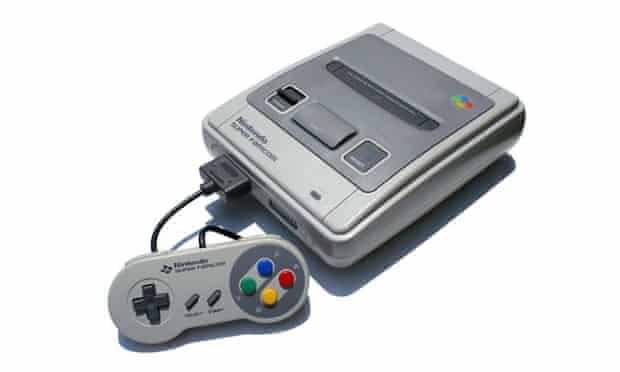
Super Nintendo Entertainment System, 1990
Some call Nintendo’s 16bit machine the greatest games console of all time, and it’s difficult to disagree. It was technically superior to the Mega Drive with more colours and clever sprite rotation/scaling hardware and it has a truly vast software catalogue. Indeed, from 1990 to 1996, the system saw some of the most iconic series’ of all time, from Final Fantasy to Street Fighter, with Nintendo wringing the most out of its exclusivity deals with Japanese developers. And of course, there were homegrown classics like Super Mario Kart, Super Metroid and F-Zero, as well as the wonderful Donkey Kong Country titles from first-party studio, Rare. And basically, if you want to understand the history of the JRPG genre, this is where to come and gorge yourself: Chrono Trigger, Zelda, Secret of Mana, Final Fantasy III… the list is endless.
Buying guide: As with the Mega Drive, a basic unit with all the leads will cost you upwards of £20, but it’s worth checking eBay for decent bundles of hardware and games. The pal machines can get quite discoloured so this isn’t going to look pretty, but the hardware is sturdy.
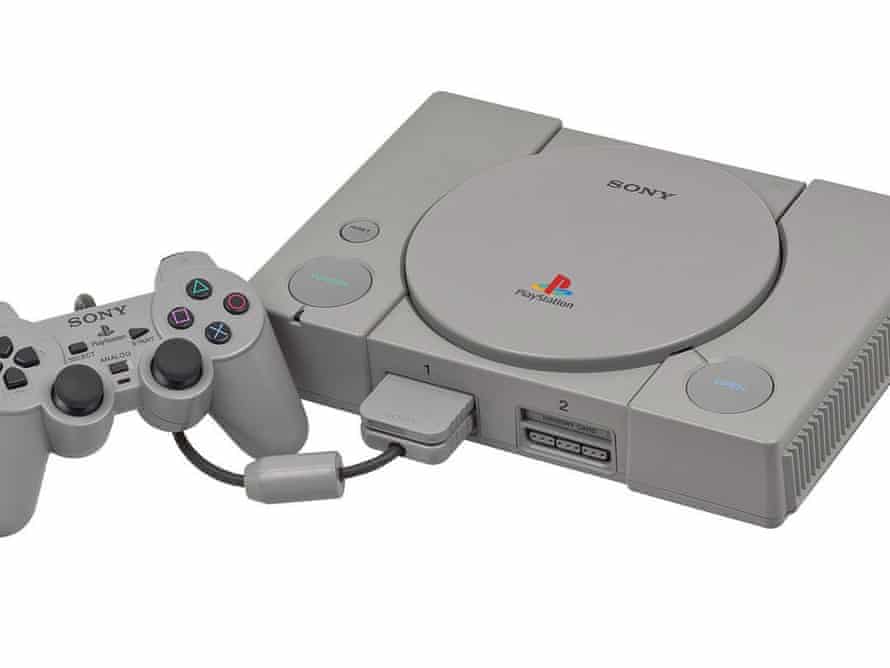
Sony PlayStation, 1994
It was tough to decide between Sony’s original 32bit console and its spectacularly successful successor, but for greater retro appeal, we went for the former. This was the machine that totally disrupted the home console market, shoving Sega and Nintendo out of the way and bringing Sony into the industry in a big way. The sleek hardware architecture is built for 3D graphics, and unlike its rival, the Sega Saturn, developers got to grips with it fast, relishing a new piece of kit to fiddle with. Games-wise, this is where a lot of the key current franchises came into their own, including Resident Evil, Metal Gear Solid, Tekken and Tomb Raider, and where developers discovered the twenty-something, post-pub gaming generation through offbeat music-powered classics such as WipEout and Pa Rappa the Rappa. It’s also worth tracking down gems like Konami’s strategy RPG Vandal Hearts and Reflections’ early open-world gangster adventure, Driver.
Buyers guide: There were several iterations of the PlayStation One and you should do some research before buying, even if that just means reading the Wikipedia entry on PlayStation Models. Earlier version had more inputs on the back as well as a Parallel I/O connector, which was only ever really used for cheat cartridges. However, these first models also had some problems playing FMV (full-motion video), so unless you really want Audio In/Out connections, go for a later iterations. The budget PSone machines are okay, but they’re teeny and look like toys – they don’t have the slightly chunky bold looks of the originals. The PSone also omits the serial port, so if you fancied connecting two PlayStations together for local multiplayer WipEout face-offs, avoid it. As for pricing, you can get a machine for a tenner on eBay, and often that will include a few games. Remember to search locally, though, to save on postage with those massive bundle deals. Oh and you’ll need some memory cards to save your games, too!
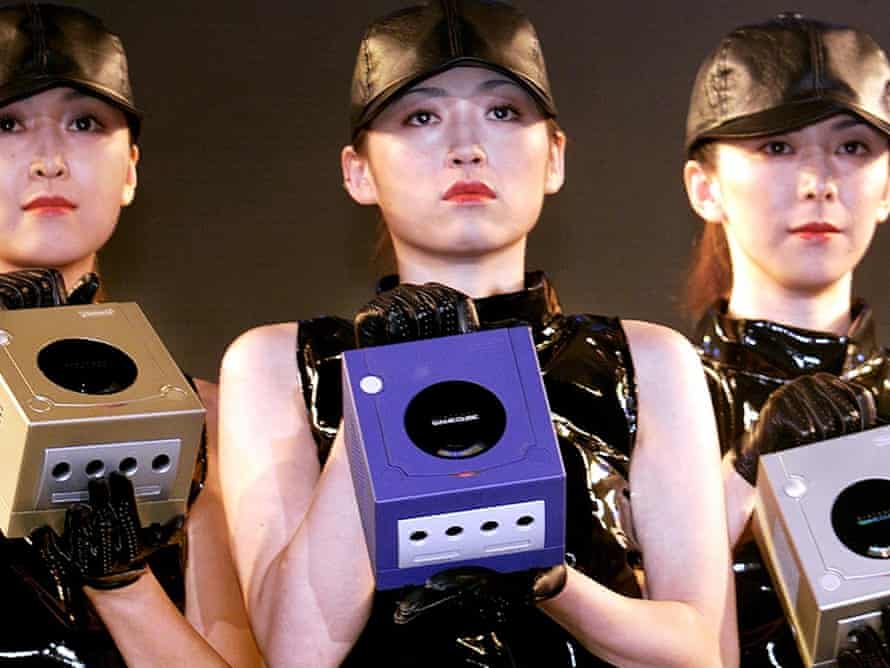
Nintendo Game Cube, 2001
Another Nintendo machine, but this one takes us to the periphery of the modern era. Launched against the mighty PlayStation 2 and the original Xbox, it is often erroneously thought of as a failure, even though it sold over 22m units and Nintendo made a tidy profit on each one. Well-known for its distinctive box-like design and proprietary mini-disc games format, it looked childish compared to its super-masculinised rivals, and never got the third-party publisher support it deserved. Still, there were some amazing games, with the likes of Super Smash Bros, Super Mario Sunshine and Animal Crossing all holding up to modern scrutiny. And it wasn’t all family-friendly cuteness: GameCube had arguably the best ever survival horror title, Resident Evil 4, as well as the bizarre Killer7 and the dark-as-hell Eternal Darkness: Sanity’s Requiem – every one of those will shock and amaze even today.
Buying guide: you’ll get a standard blue or black machine for around £15-30, but may have to pay more for one of the limited edition platinum models. If you’re really into colours, there’s a lovely orange version but that was only available in Japan so you’d have to stick with buying NTSC games. Again, go for bundles where possible and if you can get more than one joypad even better – you will want to play Super Smash Bros. with friends.
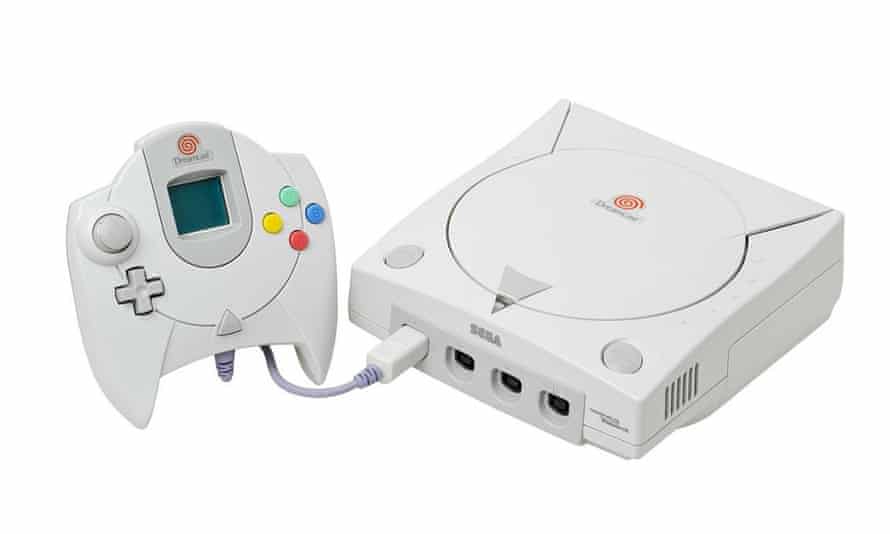
Sega Dreamcast, 1999
The machine that took on the might of the Playstation 2 – and nobly failed – is one of the most interesting mainstream consoles in recent history. It was the first entrant in the 128bit generation, the first to include a built-in modem for online multiplayer action, and the first to include a personal screen in its controller, capable of playing its own games – an idea later borrowed by Nintendo for the Wii U. It was also home to some truly wonderful games, from Sega’s own Jet Set Radio, Crazy Taxi and Shenmue, to brilliant third-party titles like Soul Calibur and Metropolis Street Racer. There was the prototype console MMORPG, Phantasy Star Online, and the utterly weird Seaman, a game about a talking fish, with a narration from Leonard Nimoy. There was the musical fun of Space Channel 5 and Samba de Amigo; there was a fishing game – Sega Bass Fishing – that came with a fishing rod controller; there was a train simulation – Densha De Go – that came with a train driving dashboard controller. The visuals were luscious, the sound gorgeous, the ideas plentiful. A beautiful loser.
Buying guide: If you want a Pal machine (one that will play UK-bought games) you’re stuck with the basic model. It’ll set you back between £30-40 on eBay, but be careful with controllers, the trigger buttons are prone to snapping, so if you’re buying online, check with the seller that this hasn’t happened. Also, make sure you get a couple of controllers and visual memory units (i.e. the little memory cards/mini-consoles) and I’d thoroughly recommend a VGA adaptor, which will make the games look lovely on your HDTV. If you suddenly get really into Dreamcast and want some collectible hardware, you’re looking at Japanese or American imports – Sega Retro has a list of all available models, but these will be super expensive. Finally, if you’re buying games that came with dedicated peripherals (Sega Bass Fishing, Samba de Amigo, House of the Dead, etc), make sure you get the accessories too. I’d also snag an Agetec arcade stick for serious Soul Calibur and Capcom vs SNK bouts.
Accessories
If you find yourself succumbing to the retro gaming bug, here are some other things you may need
1. A CRT monitor. If you’re buying a console from before 2000, the chances are, the visuals will look better on a traditional CRT television rather than a new flatscreen display. You could just buy a basic old telly from a car boot sale or local newspaper ad, but there are better options. We’d recommend a decent TV monitor, like a Sony PVM – these were produced for the television industry, but they’re relatively cheap to pick up on eBay and give a great picture quality to classic games. Hantarex also used to make amazing ‘quadristandard’ CRT montors with a vast array of inputs and the ability to play both Pal and NTSC games – you can occasionally track these down on eBay. Alternatively, you can buy something called a scanline processor that will give you a great picture from vintage games on a modern flatscreen TV. They cost around £100, but they make a huge difference. Check out this guide to scanline processing for more info.
2. The right cables. Viewing your old retro games through a standard RF cable (the one that plugs into the aerial socket on the back of the TV) is rarely the best way to experience them. At the very least you should invest in a set of composite or component cables, or even better a true RGB SCART cable, which provides a superbly crisp image. Basic cables can usually be found on Amazon or eBay, but if you’re looking for something to connect, say, a Sony PVM to your Mega Drive, look for a specialist supplier. I use Retro Gaming Cables who have a vast array of obscure accessories and are really friendly and knowledgeable.
3. Online help. There are dozens of websites, forums and online communities dedicated to retro gaming, most are only too pleased to help newcomers with technical issues. Try RacketBoy, HardcoreGaming101 or Sega-16. Also the monthly Retro Gamer magazine is very good, written by knowledgeable staff and filled with interesting features and interviews.






